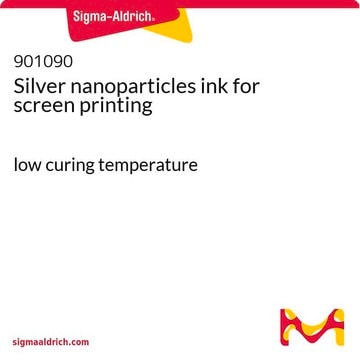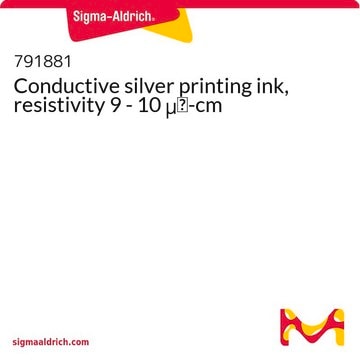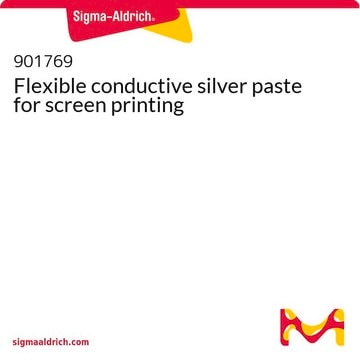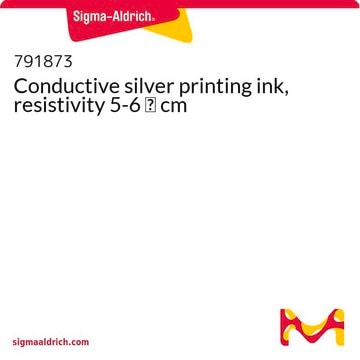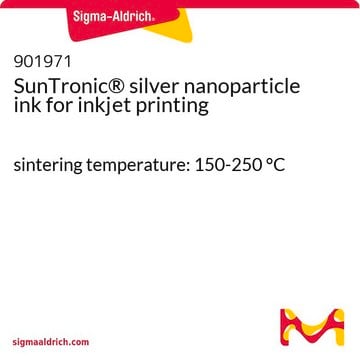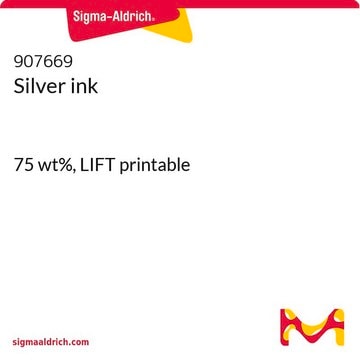おすすめの製品
詳細
Sheet resistivity: <0.010 Ω/sq/mil (150°C/10 min)
Solid content: 82-85% (120 °C)
Volume resistivity: <2.5x10-5 Ω.cm (150°C/30 min)
形状
liquid
粘度
45-55 Pa.s
保管温度
2-8°C
詳細
The ink exhibits high viscosity, low slumping, excellent conductivity and environmental stability, and adhesion to various substrates, including glass, various metals, PET, and transparent conductive films.
AST6025 is specifically suitable for printing of fine interconnects, printed RF antennae, and bus bars for touch panels.
注意
Typical drying temperature may range from 120-200°C (248-392°F) depending on temperature tolerance of the substrate.Drying time may range from 2-30 minutes.Higher drying temperature and/or longer drying times will result in better electrical performance, adhesion and mechanical properties.
Optimum drying conditions should be established for particular equipment used by the customer.
AST6025 is supplied as ready-to-use ink. It should be stirred well prior to printing. AST6025 is suitable for use on hand, semi-automatic or fully automatic screen printing machines.
Typically, polyester or stainless screens with mesh count 325-430 threads/inch can be used depending on desired ink film thickness and resolution. For fine lines between 100 - 250 microns nominal line width, stainless screen mesh is preferred with mesh count between 325-400 threads/inch. For <100 microns line widths, 430 and higher stainless steel mesh counts are recommended.
法的情報
シグナルワード
Danger
危険有害性情報
危険有害性の分類
Aquatic Acute 1 - Aquatic Chronic 1 - Carc. 2 - Eye Dam. 1
保管分類コード
10 - Combustible liquids
WGK
WGK 3
引火点(°F)
212.0 °F
引火点(℃)
100 °C
適用法令
試験研究用途を考慮した関連法令を主に挙げております。化学物質以外については、一部の情報のみ提供しています。 製品を安全かつ合法的に使用することは、使用者の義務です。最新情報により修正される場合があります。WEBの反映には時間を要することがあるため、適宜SDSをご参照ください。
PRTR
第一種指定化学物質
労働安全衛生法名称等を表示すべき危険物及び有害物
名称等を表示すべき危険物及び有害物
労働安全衛生法名称等を通知すべき危険物及び有害物
名称等を通知すべき危険物及び有害物
Jan Code
901879-BULK:
901879-VAR:
901879-25G:4548173361062
試験成績書(COA)
製品のロット番号・バッチ番号を入力して、試験成績書(COA) を検索できます。ロット番号・バッチ番号は、製品ラベルに「Lot」または「Batch」に続いて記載されています。
この製品を見ている人はこちらもチェック
資料
Professors Tokito and Takeda share design principles and optimization protocols for organic electronic devices, focusing on flexibility and low cost.
時任教授と竹田教授が、プリントおよび溶液処理された、低コストで高度にフレキシブルな有機エレクトロニクスデバイスのための、新しい材料、デバイス構造設計の原則、および性能最適化のプロトコルを紹介します。
ライフサイエンス、有機合成、材料科学、クロマトグラフィー、分析など、あらゆる分野の研究に経験のあるメンバーがおります。.
製品に関するお問い合わせはこちら(テクニカルサービス)